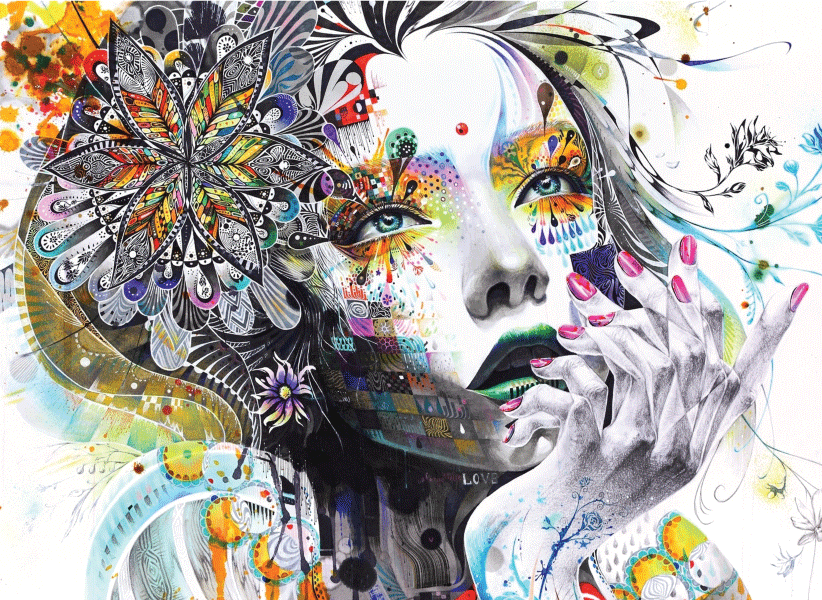Introduction:
Welcome to the exciting world of graphic design! Whether you’re an aspiring artist, a small business owner, or simply someone who appreciates visual aesthetics, this beginner’s guide will introduce you to the fundamentals of graphic design and help you embark on your creative journey. We’ll cover everything from understanding the basic principles to mastering essential tools. So, let’s dive in!
Understanding Graphic Design
Graphic design is the art of visually communicating ideas, information, and messages using images, typography, colours, and layout. It is a versatile discipline encompassing various mediums, including print, digital media, advertising, branding, and more. Graphic designers are crucial in crafting visual experiences that evoke emotions, convey meaning, and captivate audiences.
The Basic Principles of Graphic Design
A well-composed design is like a visual symphony that guides the viewer’s eye, creates balance, and communicates the intended message effectively. Here are some essential principles to consider:
Firstly, Alignment: Ensuring that elements are properly aligned helps create a cohesive and harmonious design. Aligning objects to a grid or along specific edges brings order and professionalism to your work.
In addition, Hierarchy: Organizing elements by their importance establishes a visual hierarchy. Use size, color, contrast, and positioning to guide the viewer’s attention to the most important elements first.
Moreover, Balance: Achieving visual equilibrium is crucial. Balance can be symmetrical or asymmetrical, but it should provide stability and cohesion.
Furthermore, White Space: Don’t underestimate the power of space. White or negative space gives your design room to breathe, improves readability, and enhances overall aesthetics.
Colours and Typography
Colors have a profound impact on emotions, perceptions, and brand identity. Here’s what you need to know about colours in graphic design:
Secondly, Color Theory: Understanding the basics of colour theory helps you create harmonious colour palettes. Consider concepts such as complementary, analogous, and monochromatic colors to evoke specific moods and enhance visual appeal.
Additionally, Color Psychology: Different colours evoke different emotions and associations. For example, warm tones like red and orange can convey energy and passion, while cool tones like blue and green create a sense of calmness and trust.
Another key point is Contrast: Contrast plays a vital role in making your designs pop. Using contrasting colours allows you to draw attention to specific elements and create visual interest.
In conclusion, Color Accessibility: It’s crucial to consider colour accessibility for individuals with visual impairments. Ensure your designs are accessible by using sufficient colour contrast and providing alternative text when necessary.
Transition Words: Moving on, On the other hand, Additionally, Finally
Essential Tools for Graphic Design
Now that you understand the principles, let’s explore the essential tools you’ll need to bring your designs to life:
Moving on, Graphic Design Software: Popular software like Adobe Photoshop, Illustrator, and InDesign are widely used in the industry. These tools offer many features and capabilities for creating and editing images, illustrations, and layouts.
On the other hand, Hardware: A computer or laptop with sufficient processing power and memory is essential for running graphic design software smoothly. Investing in a graphics tablet can greatly enhance your digital drawing and design capabilities.
Additionally, Online Design Tools: If you’re starting or prefer a more accessible option, online platforms like Canva and Figma offer user-friendly interfaces and pre-designed templates to help you create professional-looking designs.
Finally, Learning Resources: Use online tutorials, courses, and communities to develop your skills and stay updated with the latest design trends and techniques. Websites like Skillshare and YouTube are treasure troves of valuable resources.
The Art of Visual Branding
Visual branding is the process of creating a unique and recognizable visual identity for individuals, businesses, or organizations. Here’s what you need to know about branding in graphic design:
In the next section, Logo Design: A logo is the cornerstone of a brand’s visual identity. It should be memorable, reflect the brand’s personality, and work well across different mediums and sizes.
Moreover, Color Psychology and Consistency: Consistent use of colours, typography, and visual elements helps establish a cohesive brand identity. Consider how your brand’s colors and design choices align with its values, target audience, and intended message.
Additionally, Typography and Brand Voice: Fonts and typography are crucial in communicating a brand’s personality. Choose fonts that align with the brand’s tone, voice, and target audience.
Another important aspect is Visual Assets: Beyond logos and typography, visual assets like illustrations, icons, and photography contribute to a brand’s visual language. Consistency in style and quality is key to maintaining a strong brand presence.
Evolving as a Graphic Designer
Lastly, becoming a skilled graphic designer is an ongoing process. Here are a few tips for continual learning and growth:
Lastly, Seek Inspiration: Surround yourself with design inspiration. Follow design blogs, explore galleries, and study the work of established designers. Remember, inspiration can come from anywhere!
In conclusion, Practice and Experiment: The more you practice, the better you become. Experiment with different styles, techniques, and mediums to expand your creative horizons.
To sum up, Feedback and Collaboration: Seek constructive feedback from peers, mentors, or online communities. Collaboration with other designers can also provide fresh perspectives and insights.
Conclusion:
To conclude, graphic design is a dynamic and exciting field that offers endless creative possibilities. You can unlock your potential as a graphic designer by understanding the principles, mastering essential tools, and continually learning and growing. Embrace your creativity, experiment fearlessly, and let your designs leave a lasting impression. Happy designing!


